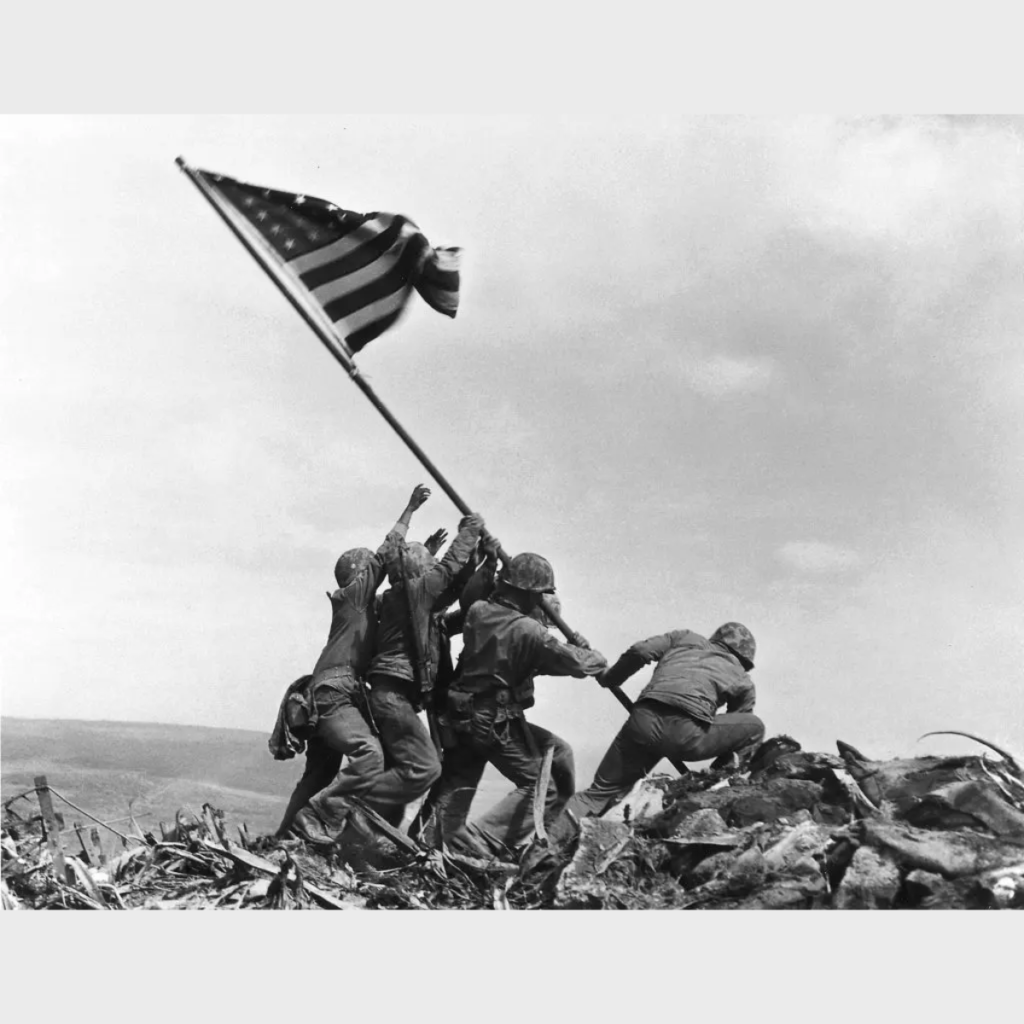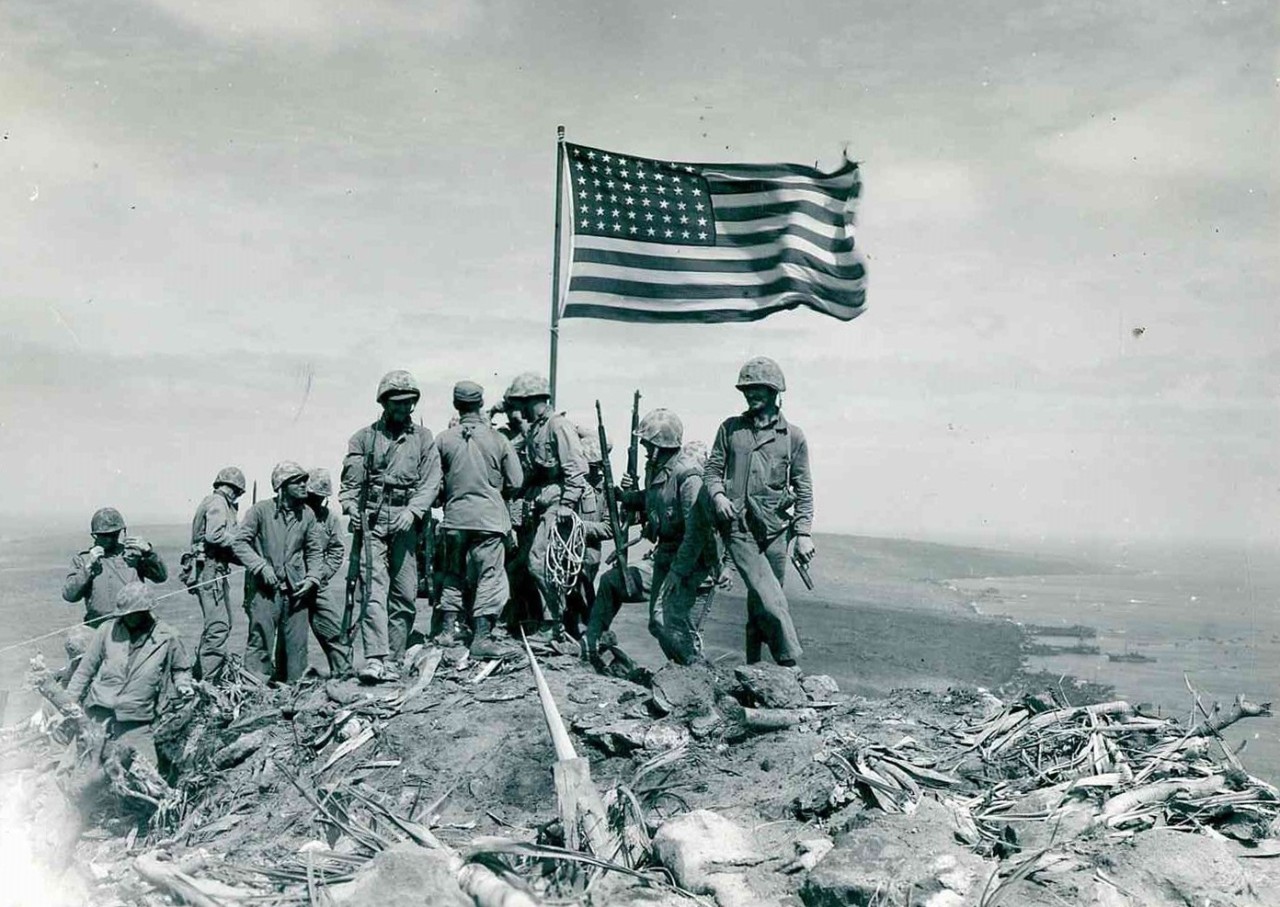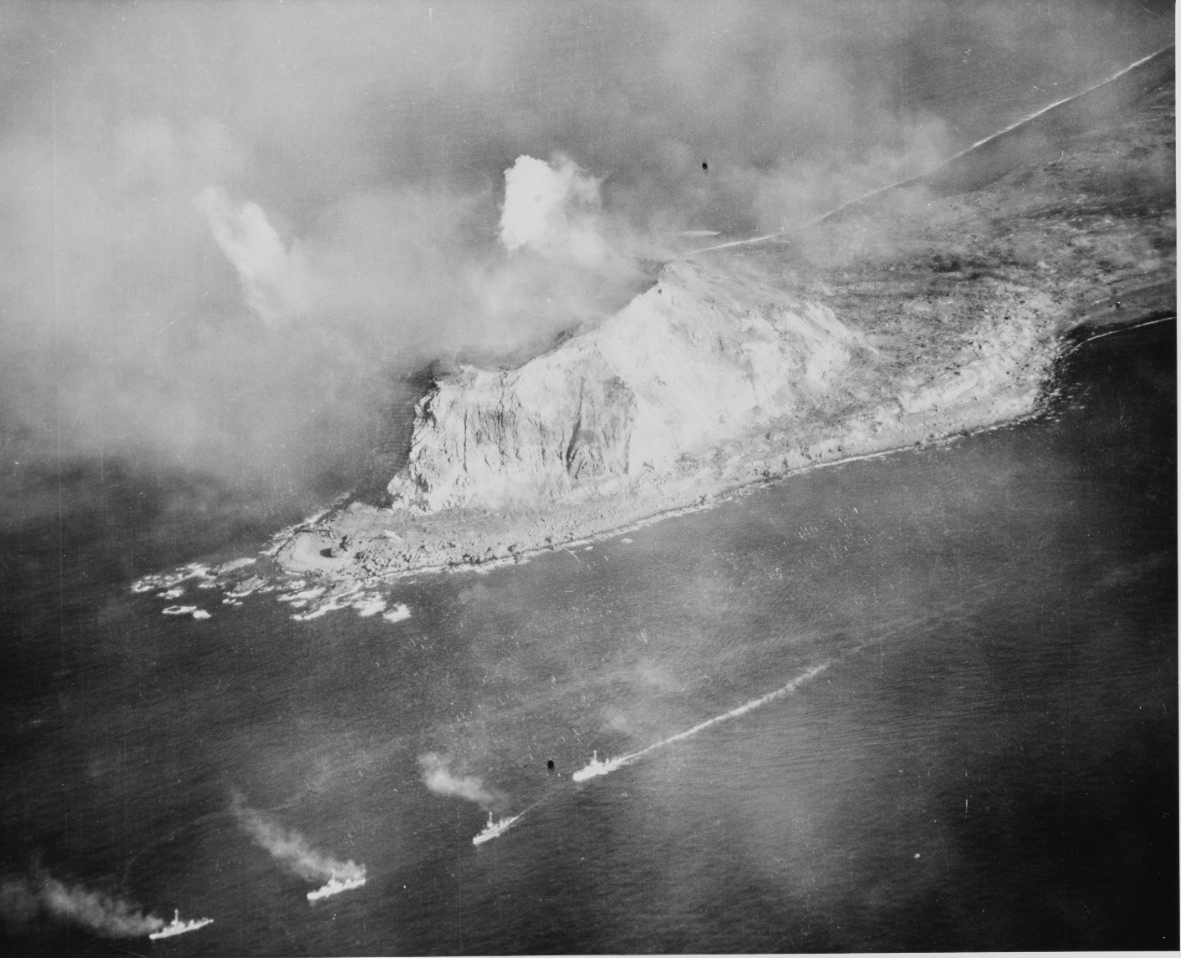

The capture of the Mariana Islands in late 1944 had given the US a base from which to launch long-range bombing raids on Japan, but its fighter planes, which couldn’t carry so much fuel, were unable to accompany the bombers on what was a 3,000-mile round trip. But as Iwo Jima was just 650 miles from Japan, it was thought that it offered an ideal base for US fighter planes. A task force was assembled to capture it and a two-month bombing campaign was mounted to soften it up.
General Tadamichi Kuribayashi, the Japanese commander on Iwo Jima, wasn’t going to give up without a fight. He turned the island into a fortress with a vast network of pillboxes, bunkers and fortified caves linked by trenches and 11 miles of underground tunnels. Hundreds of hidden artillery, mortar, machine gun and sniper positions were set up.
The storm begins
The US assault was preceded by a three-day naval bombardment, but this, it later became apparent, was not long enough. In any case, the 20,000 Japanese defenders were so well dug in that it had little effect. On the morning of 19 February, the attack began. Ferried by an armada of nearly 500 landing craft and ships, the first 8,000 US marines splashed through the surf onto beaches on the south side of the island.

Iwo Jima, 23 February 1945: Marines risk sniper fire atop Mount Suribachi as they gather to the great attraction of the day—5th Division Marines raise the American flag. Photo by Marine Pvt. Bob Campbell.
Iwo Jima: Battle facts
Who fought at Iwo Jima?
Japan and the US. The Japanese had around 20,000 men under General Tadamishi Kuribayashi, the US around 70,000 men under Admiral Chester Nimitz.
When was the battle of Iwo Jima?
It was fought between 19 February and 26 March 1945, during the Second World War.

A column of LCS(L) passes Mount Suribachi, on the southern end of Iwo Jima, during the pre-invasion bombardment, circa 17-19 February 1945. Official U.S. Navy photograph from the collections of the Naval History and Heritage Command.
Where is Iwo Jima?
Iwo Jima is a small volcanic island in the Bonin chain, 750 miles southeast of Tokyo.
Why was there a battle at Iwo Jima?
The US wants to use the island as an airbase from which to attack Japan’s home islands.
Who won the battle of Iwo Jima?
Iwo Jima was captured by the US.
How many were killed at the battle of Iwo Jima?
Losses were severe on both sides. Up to 19,000 Japanese were killed, with American losses amounting to around 6,800 killed and around 19,200 wounded.
The marines had expected the shoreline to be heavily defended so were surprised when they came under little fire as they stormed ashore. But those who thought that this was because the preliminary naval bombardment had silenced their enemy were in for a shock.
The Japanese were merely waiting for the beaches to fill up with targets before opening fire. When the beaches were clogged with men and vehicles they opened up with their mortars and artillery on the exposed US forces.
It wasn’t just this storm of steel that the Americans had to contend with – the terrain was also against them. The surf was violent and the steep beaches were made of soft volcanic ash that made driving or walking across them difficult, and digging in almost impossible. One marine compared it to trying to dig a hole in a barrel of wheat. Almost 2,500 marines were killed and wounded on the beaches but, even so, by the end of the day 30,000 Americans were ashore.
Why were there no banzai attacks?
In previous battles, a frequent Japanese response to an enemy advance had been to launch a massed and often suicidal ‘banzai’ counterattack (literally meaning ten thousand years, ‘banzai’ was the Japanese battle cry). The Americans were expecting something similar but Kuribayashi forbade it on Iwo Jima – there were to be no easy targets. Instead, the Japanese stayed in caves and bunkers inland and waited for US forces to come to them. On 20 February, the marines attacked Mount Suribachi, a dormant volcano that dominated the southern end of the island.
Many of the Japanese gun positions around the foot of Suribachi had been destroyed by naval gunfire but on the mountain itself it was a different story. At each pillbox and bunker, the Japanese fought with extraordinary determination. Eventually, after four days of non-stop combat, a small group of US marines reached the summit. In capturing Suribachi, 800 marines had died, and it was not even the main defensive position on the island.
It did, however, give rise to one of the most famous war photographs ever taken. When the marines reached the summit they set up a small US flag on a metal pole. The event was photographed by Staff Sergeant Louis R Lowery, a photographer with Leatherneck, the magazine of the US marines. However, because the flag was too small to be easily seen the decision was taken to replace it with a larger one. A second patrol of marines climbed to the summit and as five of them, plus one navy corpsman, set up the second flag they were photographed by Joe Rosenthal of the Associated Press.
His picture was an instant success and it won the 1945 Pulitzer Prize for Photography. It’s sometimes claimed that the photo was staged but this isn’t the case. Rosenthal did later admit to having staged a photograph but that was a group photo of marines posing around the flag once it had been set up.
Almost all of the 1,200 Japanese defenders were dead. Their code of war scorned surrender and most sold their lives dearly. Some were burned alive by flame throwers or torn apart by explosives thrown into their bunkers. Many too badly wounded to fight on kept a grenade at hand, ready to detonate it when US forces came near.
A small group of defenders managed to battle their way out and somehow made it to the main Japanese headquarters further north. Even though they had been ordered to break out by their dying commander in order to report the fall of Suribachi, their failure to fight to the last was greeted there with fury.
Their officer, a navy lieutenant, was called a coward and was nearly beheaded. One of the senior Japanese commanders, Captain Samaji Inouye, drew his sword, and the lieutenant knelt with his head bowed awaiting his death. But as Inouye raised the weapon, his aides wrestled it from his hands.
It would take the US forces more than a month to clear the island. Painfully inching their way across a largely barren landscape of rocks and craters, they often found themselves under fire from positions they thought they had cleared as the Japanese used their tunnel network to reoccupy them after the US forces had passed by.
Some of the bitterest fighting took place near the centre of the island, around a high point called Hill 382; a heavily-fortified hill dubbed the Turkey Knob; and a shallow depression called the Amphitheater. For most Americans, however, the area around these related features was simply known as the Meat Grinder.
The battle drags on
Iwo Jima rapidly became a stinking hellhole with decomposing bodies and parts of bodies lying unburied. Soon the whole island became infested with vast swarms of flies, adding the threat of disease to the hazards faced by the combatants. Eventually the Americans were forced to send over planes to spray the place with the insecticide DDT in a bid to keep the problem under control.
As US forces slowly advanced, Captain Inouye found himself cut off with nearly a thousand of his men near Tachiwa Point on the eastern side of the island and on 8 March, ignoring Kuribayashi’s orders against such a thing, he drew his sword and led them in a last desperate ‘banzai’ charge against the Americans. In the confused fighting that followed the US suffered nearly 350 casualties but the following day nearly 800 Japanese dead were counted. Inouye was one of them.
By 11 March, the remaining Japanese were trapped in an area around Kitano Point at the far north of the island and on 16 March, General Harry Schmidt announced that the island was secure. Even then a few hundred men still held out in a fortified ravine that US marines dubbed the Gorge.
In the early hours of 26 March, in a final act of defiance, the Japanese emerged from their tunnels to attack US positions. It is believed that this is when General Kuribayashi met his death, although his body was never identified because he had removed his insignia and fought as a common soldier.
Only 216 Japanese soldiers had been captured during the fighting (many of them unconscious or too badly wounded to kill themselves) though more remained at large for some time, emerging from caves at night to forage for food. The last two, a pair of Japanese navy machine gunners, finally gave themselves up in January 1949, three and a half years after the end of the war.

This Pulitzer Prize winning photo has become synonymous with American victory. Taken during the Battle of Iwo jima by Associated Press photographer Joe Rosenthal, it is one of the most reproduced, and copied, photographs in history.
What happened after Iwo Jima?
The Americans had suffered around 26,000 casualties in capturing the tiny island. It had been the only major battle in the Pacific War in which US casualties were higher than the total of Japanese dead.
Five days after the fighting stopped on Iwo Jima the US launched a massive amphibious assault on the much larger Japanese island of Okinawa. In the 12-week battle, more than 50,000 US soldiers were killed or wounded, more than 100,000 Japanese soldiers died, and a similar number of civilians lost their lives. Iwo Jima and Okinawa had shown the Americans just how far the Japanese would go to defend their country.